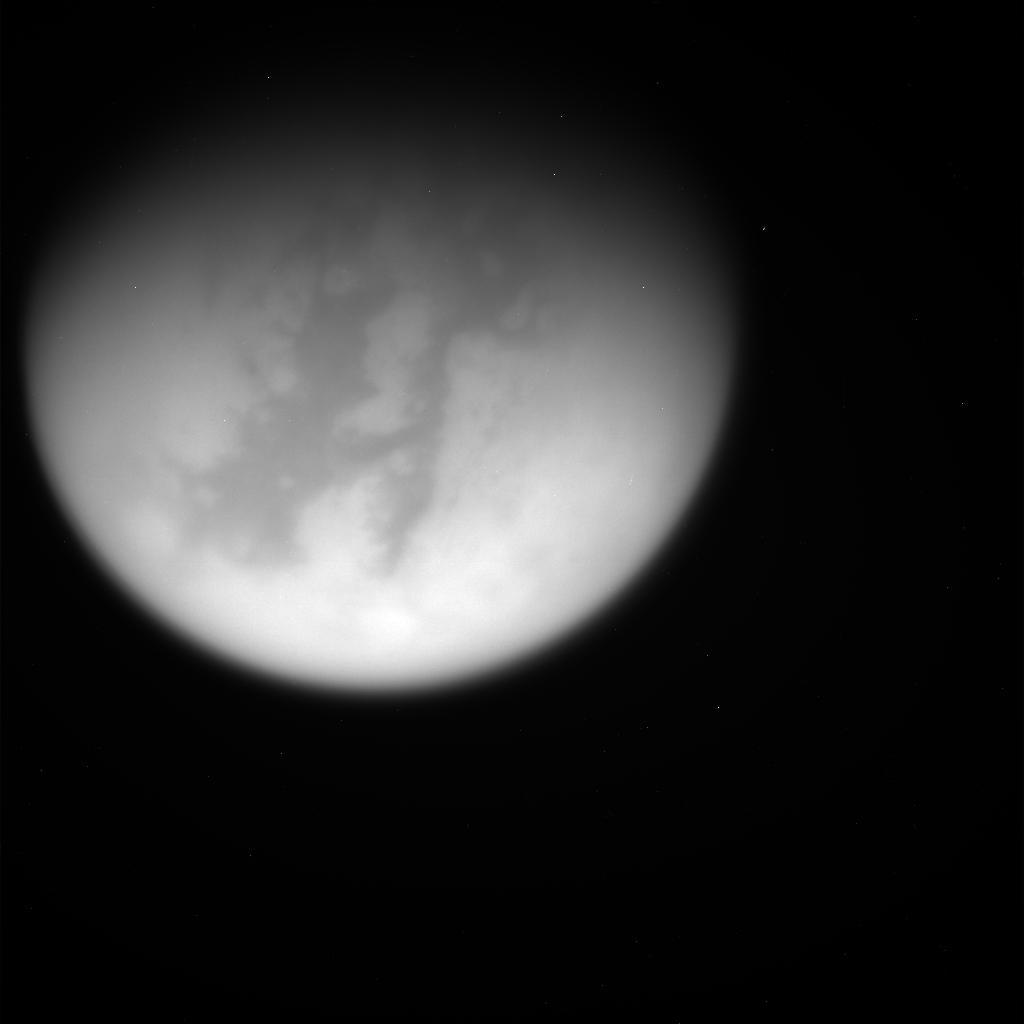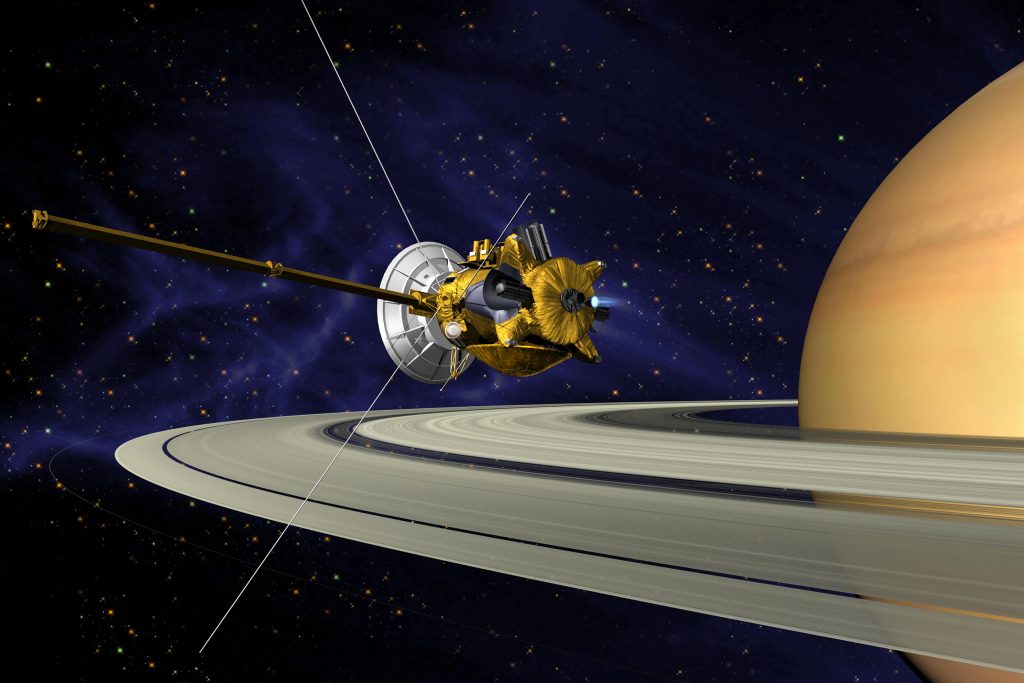By Wes O’Donnell
Managing Editor of In Military, InCyberDefense and In Space News.
Get started on your Space Studies Degree at American Military University. |
The Cassini–Huygens space-research mission, commonly called Cassini, involved a collaboration among NASA, the European Space Agency (ESA) and the Italian Space Agency (ASI) to send a probe to study the planet Saturn, including its rings and moons.
On Thursday, March 31, 2005, the Cassini spacecraft successfully flew by Saturn’s largest moon, Titan, at about 2,400 kilometers (1,500 miles) above the surface.
The image above is one of the raw images of Titan. Courtesy NASA.
Among the instruments onboard Cassini, the spacecraft boasted:
- Optical Remote Sensing (“Located on the remote sensing pallet”)
- Composite Infrared Spectrometer (CIRS)
- Imaging Science Subsystem (ISS)
- Ultraviolet Imaging Spectrograph (UVIS)
- Visible and Infrared Mapping Spectrometer (VIMS)
- Fields, Particles and Waves (mostly in situ)
- Cassini Plasma Spectrometer (CAPS)
- Cosmic Dust Analyzer (CDA)
- Ion and Neutral Mass Spectrometer (INMS)
- Magnetometer (MAG)
- Magnetospheric Imaging Instrument (MIMI)
- Radio and Plasma Wave Science (RPWS)
- Microwave Remote Sensing
- Radar
- Radio Science (RSS)
This movie of Titan shows data taken with Cassini’s visual and infrared mapping spectrometer during the last three flybys of Titan. The flybys took place on Oct. 28, 2005, Dec. 26, 2005, and Jan. 15, 2006. These false-color images were taken at wavelengths of 1.6 microns shown in blue, 2.01 microns in green and 5 microns in red. The viewing geometry of the December flyby is roughly on the opposite hemispheres of the flybys in October and January. There are several important features shown by the movie. First, the globe of Titan exhibits two major types of terrain. One is very bright, and a darker one seems to be concentrated near the equator.
Titan also has two very bright regions, the large one known as Tui Reggio, and the other as Hotei Arcus. These regions are thought to be surface deposits, probably of volcanic origin, and may be water and/or carbon dioxide frozen from the vapor. The December flyby data show that the western margins of Tui Reggio have a complex flow-like structure consistent with eruptive phenomena.
The reddish feature at the south pole is Titan’s south polar cloud system, which was very bright during the December flyby. During the October and January flybys it is barely visible, indicating that the atmosphere over titan’s south pole is very dynamic. The Cassini-Huygens mission is a cooperative project of NASA, the European Space Agency and the Italian Space Agency. The Jet Propulsion Laboratory, a division of the California Institute of Technology in Pasadena, manages the mission for NASA’s Science Mission Directorate, Washington, D.C. The Cassini orbiter was designed, developed and assembled at JPL. The visual and infrared mapping spectrometer team is based at the University of Arizona. GIF courtesy NASA.
This is an artist’s concept of Cassini during the Saturn Orbit Insertion (SOI) maneuver, just after the main engine has begun firing. The spacecraft is moving out of the plane of the page and to the right (firing to reduce its spacecraft velocity with respect to Saturn) and has just crossed the ring plane. The SOI maneuver, which is approximately 90 minutes long, will allow Cassini to be captured by Saturn’s gravity into a five-month orbit. Cassini’s close proximity to the planet after the maneuver offers a unique opportunity to observe Saturn and its rings at extremely high resolution. Courtesy NASA/JPL




Comments are closed.